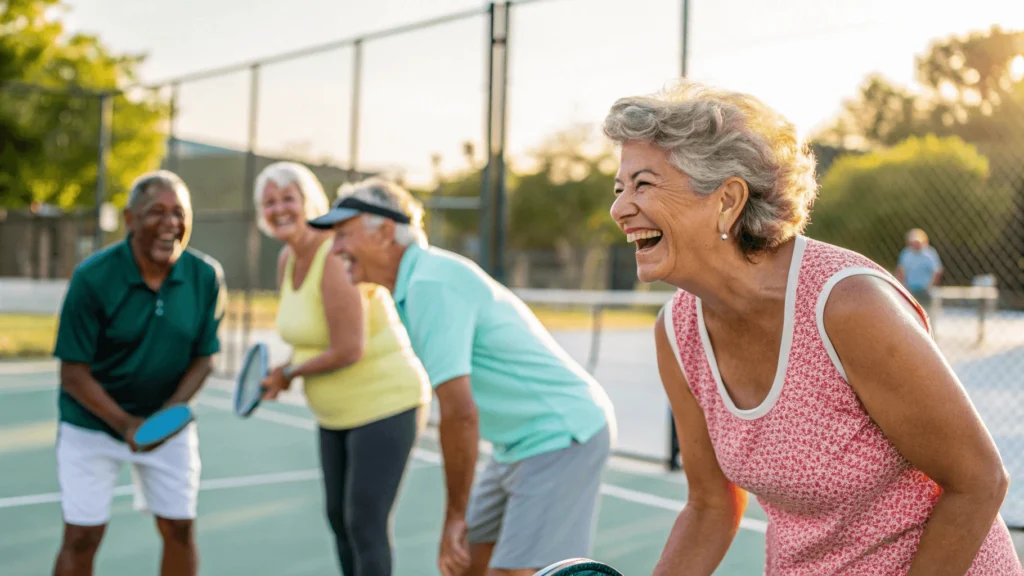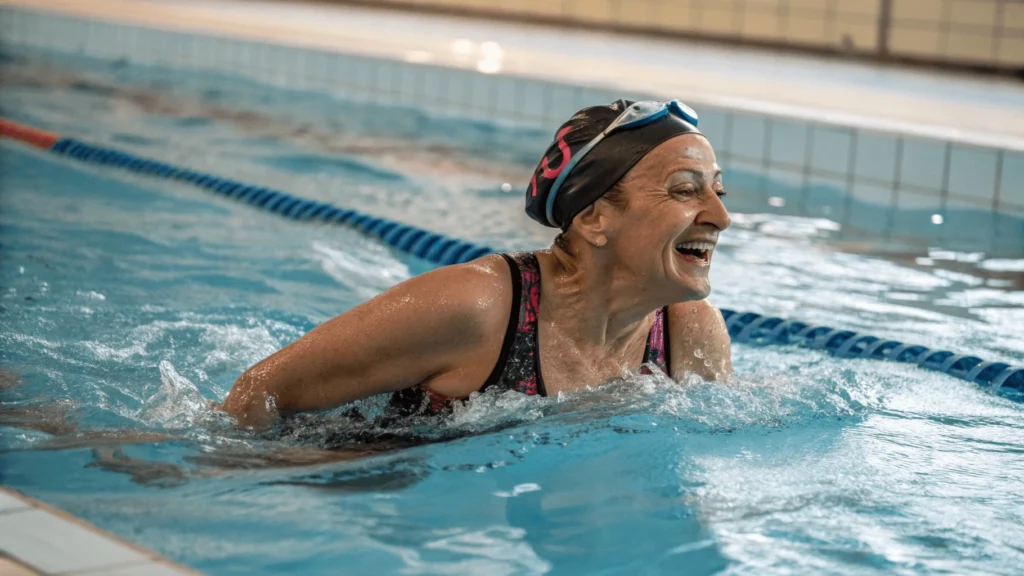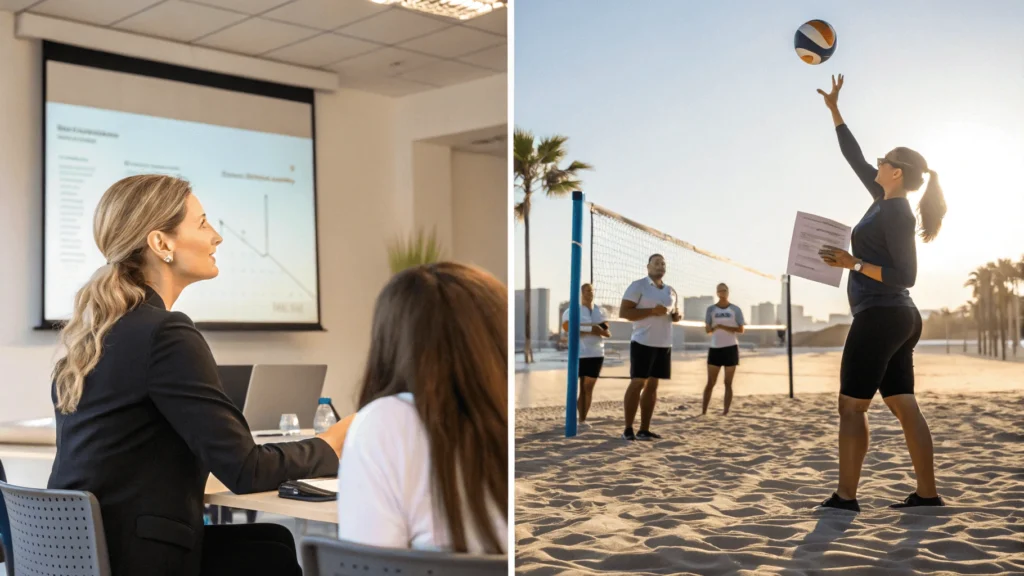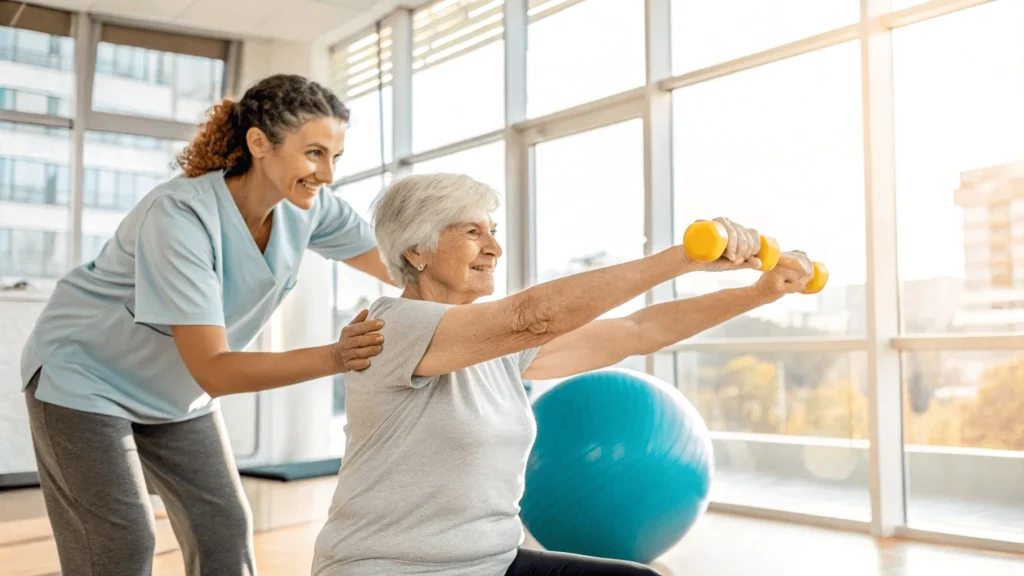I still remember my first attempt at pickleball last summer – awkwardly gripping the paddle while my 67-year-old neighbor effortlessly returned my wild shots. “I only started playing three years ago,” she laughed, seeing my surprise. Her story isn’t unusual. Starting a new sport in adulthood might feel intimidating, but countless people discover athletic passions well into their 40s, 50s, and beyond. The benefits? They’re life-changing.

Table of Contents
Our Expert Team
To navigate this journey, I’ve consulted three specialists who’ve dedicated their careers to adult athletic development:
Gabrielle Bolin has coached over 4,000 adults through their first attempts at various sports since 2008. “I’ve seen people discover talents they never knew they had,” she tells me over coffee.
Katie Austin, whose own mother began marathon running at 52, specializes in dismantling the psychological barriers that keep grown-ups sidelined.
Leada Malek, PT, DPT, CSCS brings clinical expertise in adapting physical activities for bodies of all capabilities. Her clinic walls are covered with photos of clients attempting new sports—many with gray hair and beaming smiles.
Why Fewer Women Play Sports

The statistics paint a troubling picture. Women’s participation in recreational sports has declined 13% since 2015, with teenage girls abandoning athletics at twice the rate of their male peers. A recent survey found that 72% cited body image concerns as a primary reason.
“I see these patterns continue into adulthood,” Bolin sighs. “A woman who quit basketball at 16 because someone commented on her thighs often carries that same hesitation into her 40s when considering joining a local league.”
How Starting a New Sport Can Change Your Life
The impact of introducing a new sport into your routine extends far beyond physical fitness:
Better Mental and Physical Health
“During perimenopause, I felt completely disconnected from my body until I discovered swimming,” shares Austin. “My clients report similar transformations. Hot flashes, mood swings, sleep disruptions—they don’t disappear entirely, but their intensity and frequency often diminish dramatically when regular physical activity enters the picture.”

Learn Important Skills
Marianne Chen, 51, credits her recent promotion partly to lessons learned on the volleyball court. “Suddenly I was applying the same quick-thinking and team coordination to boardroom situations,” she explains. “My boss actually commented on the positive change in my leadership approach.”
Get Stronger Body and Mind

“My Tuesday night running group includes a breast cancer survivor, a recovering alcoholic, and a widow,” says Malek. “They’ve taught me that physical resilience and mental fortitude develop in tandem. These women tackle hills the same way they’ve faced life’s challenges—one step at a time, with determination and mutual support.”
Make Friends, Live Longer
Research published in the Journal of Aging Studies revealed that people with robust social connections have a 50% reduced mortality risk compared to isolated individuals. “I’ve watched complete strangers become life-long friends through adult soccer leagues,” notes Bolin. “They start carpooling to games and end up vacationing together years later.”
Feel Happier
A 10-year longitudinal study following adults over 65 found significantly lower depression rates among those maintaining active hobbies, particularly physical ones. Participants reported a 37% increase in self-reported happiness measures.
How to Start a New Sport as a Grown-Up
Consider these expert-backed approaches:
Be Okay Being a Beginner
“I make all my new clients write down this mantra: ‘I give myself permission to be terrible at this,'” laughs Austin. “We’ve forgotten the freedom that comes with learning. Children fall constantly when learning to skate and get right back up, while adults often quit after one embarrassing tumble.”
Bring Friends Along
“Accountability partners make all the difference,” insists Bolin. “My most successful clients recruit a friend or two for their first pickleball session. The shared vulnerability creates an immediate bond.”
Pick Something Fun
James Martinez, 63, tried running, swimming, and cycling before discovering indoor rock climbing. “I hated everything until I found something that felt like play rather than exercise,” he admits. “Now my grandkids can’t keep up with me on the climbing wall.”
Watch Yourself Improve
“My phone is filled with awkward videos of my first yoga attempts,” shares Malek. “Now I can hold poses I once thought impossible. Those early recordings are my motivation on days I feel stuck.”
9 Great Sports to Try
Based on success rates among beginners over 40, our experts recommend:
1. Pickleball or Tennis
The Wall Street Journal recently dubbed pickleball “the retirement community phenomenon gone mainstream.” Its smaller court and slower pace make it accessible, while still providing impressive cardiovascular benefits.
2. Gymnastics
“Adult gymnastics isn’t about backflips,” clarifies Bolin. “It focuses on fundamental movement patterns that improve everyday function. My 70-year-old client now gets up from the floor without assistance after six months of basic gymnastics training.”
3. Golf
Beyond its reputation as a business networking opportunity, golf offers sustained moderate activity in natural settings. Many courses now offer senior-friendly tee positions and equipment modifications.
4. Swimming
After knee replacement surgery left her sidelined from tennis, Patricia Hernandez, 58, discovered lap swimming. “The weightlessness was exactly what my body needed,” she reports. “My orthopedist is amazed at how quickly I regained mobility.”
5. Masters Sports
Organizations specifically designed for competitors 35+ provide structured training and competition opportunities. “The atmosphere at masters swim meets is completely different from youth competitions,” notes Austin. “It’s competitive but incredibly supportive.”
6. Running
The beauty of running lies in its simplicity. Couch-to-5K programs have successfully transitioned thousands of non-runners to comfortable joggers through gradual progression.
7. Yoga or Pilates
“I’ve watched these practices transform people’s relationship with aging,” says Malek. “The focus on mindful movement creates body awareness that carries into everyday activities, reducing fall risk and improving confidence.”
8. Cycling
Electric-assist bikes have revolutionized cycling accessibility for adults with joint concerns or limited stamina. Many community ride groups now include e-bike divisions.
9. Local Leagues or Group Classes
Community recreation centers often offer modified sports programs specifically for beginners or older adults. “These provide built-in community with appropriate challenges,” explains Bolin.
Don’t Forget Strength Training

“If I could prescribe just one physical activity, it would be basic strength training,” asserts Malek. “Two short sessions weekly dramatically improve performance across all other activities while reducing injury risk by up to 40% in older adults.”
Starting a New Sport Is Worth It

Frank Johnson, 73, reflects on his late-in-life discovery of kayaking: “Sure, I felt ridiculous at first, flipping over in the practice pool surrounded by teenagers. But five years later, I’ve explored waterways in twelve states and made friends half my age who come to me for paddling advice.”
His experience echoes countless others who’ve pushed through initial discomfort to discover unexpected joys and capabilities.
Ready to Get Started?
What activity has piqued your curiosity? Perhaps it’s the sport you abandoned years ago or something entirely new. Local recreation centers, community colleges, and specialized studios offer adult-specific introductory programs designed for gradual skill development.
Remember – your goal isn’t Olympic qualification. Your goal is joyful movement. Your body is waiting to surprise you with what it can still learn to do. Why not find out this week?

